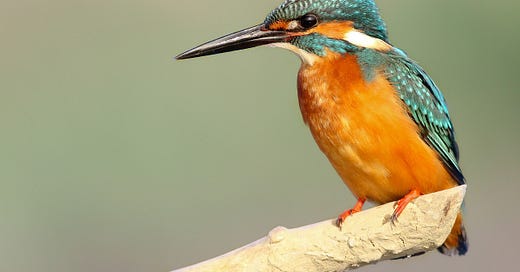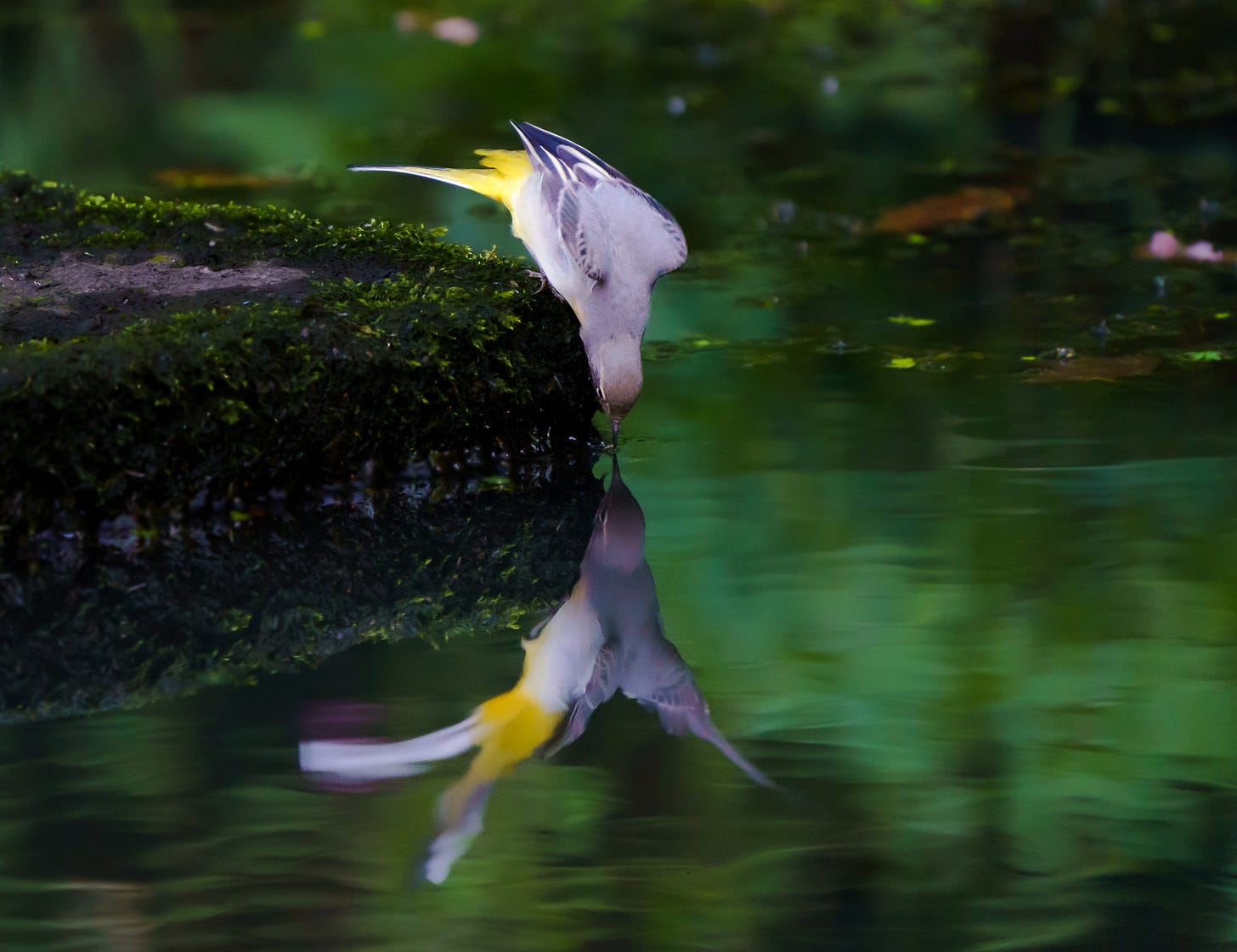Who would swap a glimpse of a kingfisher for a snatch of their whistling call?
Quite rightly, absolutely no-one. But despite their astonishing colours and wide distribution, kingfishers can be elusive, and knowing the call is a magic ticket to seeing many more of them.
To my ear the kingfisher sounds just like a dog whistle. It’s a few fast, sharp notes, given from a low branch or low in flight over a body a water.
In this recording you can hear the kingfisher at the very beginning, again at 24 seconds in, and then at intervals thereafter.
The lines that kingfisher fly, and their speed, can give rise to a particularly noticeable instance of the Doppler effect - if you are standing on a bridge and one comes along the river towards you may notice the frequency of the call seeming to rise with the volume as it approaches, and lowering as it recedes.
And because kingfishers stick close to water whenever they can, they often take a predictable line along a stream, river or canal.
Once you pick up that whistle, scanning along the line of the water will often be rewarded with a flash of electric blue and, on a lucky day, with the bird landing somewhere observable nearby.
It pays to be conscious of the two quite different colours they may present when perched - the startling blue if their back is turned to you, or the warm, much subtler orange if they are front-on. The latter is particularly easy to miss as you scan along the water’s edge.
The size can be surprising too. Common kingfishers (usually just ‘kingfisher’ in the UK, where we don’t have any other kinds) are relatively small, six inches bill-tip to tail-end.
The pied kingfishers of Africa and Asia are half the length again, and American belted kingfishers are a foot long. Meanwhile kookaburras in Australia take the prize for world’s biggest kingfisher, as well as the prize for continually remembering the world’s best joke.
👉 Listen to laughing kookaburras (all the way to: “What’s that all about?”)
So our little kingfisher is practically snack size for its biggest cousins.
Endless common kingfisher photography may have created a particular impression of where you can see them.
Picturesque ponds and lush meandering rivers, they’re all good. But flooded gravel pits, urban canal-sides and unpromising concrete culverts can ring with that whistle too.
For a kingfisher, aesthetics matters somewhat less than the quality of the water, and the fishing.
During the breeding season they look for a sandy bank in which to nest, raising two or three broods between the spring and summer. These young birds will spread out to find their own territories, so that by late summer kingfishers are widely scattered, drawn to places with plenty of prey and handy perches low over the water from which to hunt.
Autumn can be a good time to tune your ear to a kingfisher, as birds zip around to defend their watery patches - perhaps a mile or two of waterside, maybe including a bunch of local ponds in parks, farmland or gardens.
For a kingfisher, fishing rights come with a whistle.
🔗 More about how kingfishers feed and breed from the RSPB.
Often found near: Grey Wagtail
🧭 Where are they now?
By the beginning of October, most of our summer songbirds have left our shores, heading south. Virtually every British-born nightingale, cuckoo and spotted flycatcher will already be in southern Europe or Africa. Our swifts could have been in central Africa for several weeks. Some of the later migrants, like swallows, house martins and chiffchaffs are still lingering - some martins may be even be getting a final brood out of the nest - but their numbers drain away quickly, week by week, through the month.
Some Scandinavian and northern European summer birds will have crossed the North Sea and will be rubbing along with the last of our summer crop, but a feature of this autumn has been the winds and unprecedented arrivals not from the East, but from the West.
In the second half of September, a transatlantic storm carried a flurry of North American warblers and other songbirds to far-flung headlands and islands of the Irish and British coast. They have included at least one ‘first’ (a Canada warbler in Pembrokeshire) and many other exceptional records, in what has been described as ‘one of the all-time great birding spells in Britain and Ireland’.
Thanks for reading Shriek of the Week. Updates are less than weekly for now, reflecting the outrageous lack of birdsong, but there’s plenty to revisit in the A-Z of Shrieks.
And if you would like to join the Early Bird Club, we meet for an hour on the first Saturday of the month, to see what we can see (and hear) via the miracle of live cameras and microphones across the web. For an invite to that, and for access to narrated versions of Shriek of the Week, subscribe as a paid member, from £25 a year or £5 a month.
Until the curlews call next time (Joyful? Haunting? No-one can agree) - enjoy the birds.
~ Charlie
Birdsong Academy now booking:
~ Birdsong walkshops for 2024
~ Birdsong Essentials (the 10-week course) starting February 2024
Media credits:
Kingfisher recording by Lawrence Shove, via the British Library
Kingfisher image by Super-M on Pixabay
Grey Wagtail by Amee Fairbank-Brown on Pixabay






It's true - I have lived in Birmingham for the last 30 years and have never seen so many kingfishers! I remember the first time I spotted one in our local park along the river bank - I just couldn't believe it 😍
I live in New Zealand and will now be more alert to Kingfisher sounds! I'm on the edge of a tidal estuary so we are fortunate to be blessed with many. And I never knew Kookaburras were Kingfishers! Thanks for everything you share, it's brilliant.